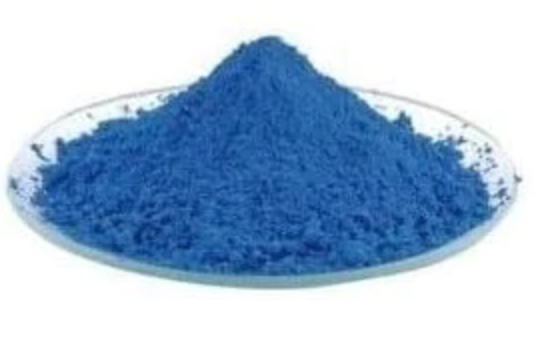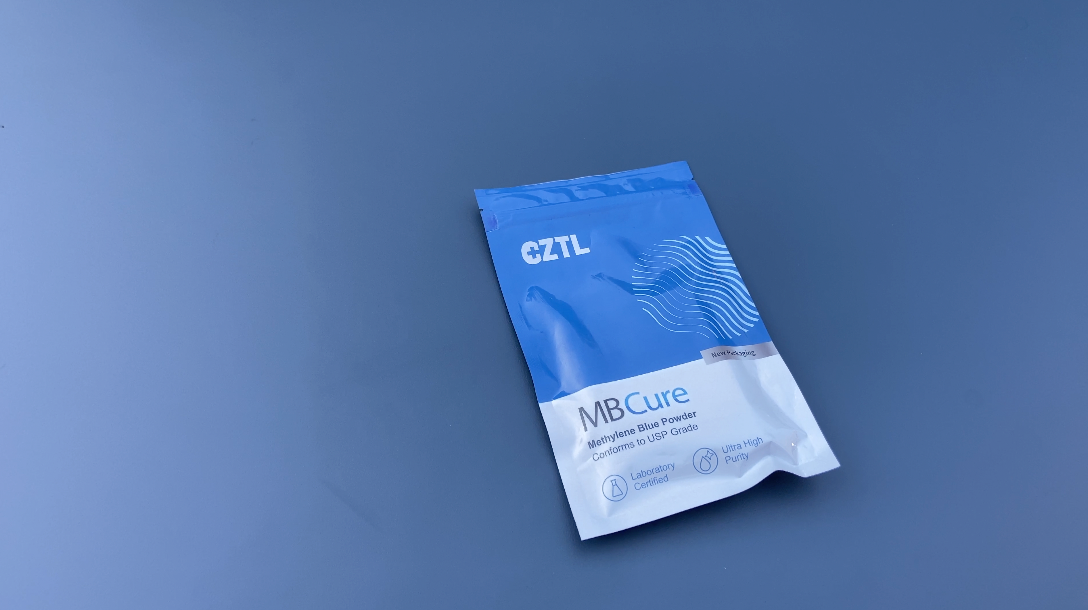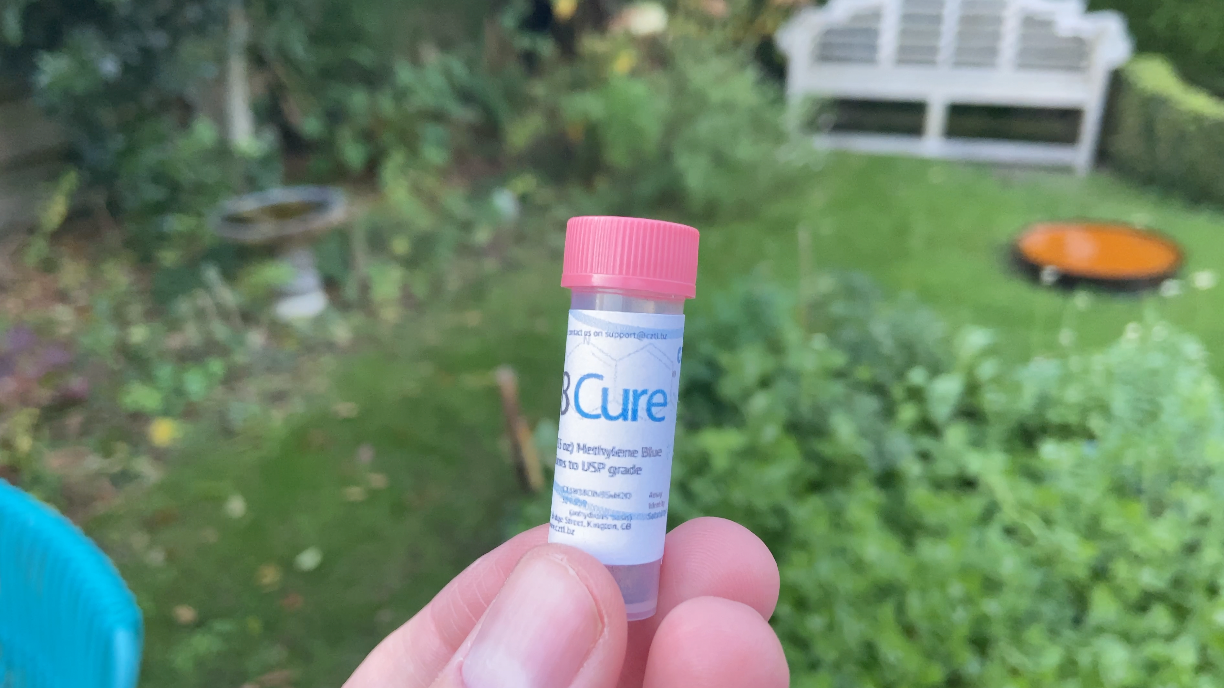Methylene blue: ‘potentially a wonder drug’
A life-extending supplement that is also inexpensive and at the same time provides, among other things, a well-functioning memory and a better mood, who wouldn’t be interested in that? It sounds almost too good to be true, but it is possible, with methylene blue.
That methylene blue is so particularly health-promoting is because it acts on a very basic level, the cellular level. This is because the drug has a positive effect on the cells’ power plants, the mitochondria. When your power plants are adequately nourished the cells are healthy, powerful, able to function the way they should. Cells, anywhere in your body, that are powerful and doing a good job promote your health. That methylene blue promotes energy production is what makes it so particularly interesting.
Another reason methylene blue stands out is because it is so very blue. As a matter of fact, using it you can dye your clothes bright blue if you like. If you ingest the drug instead, you might have a significantly blue tongue for the first hour. Inside your body methylene blue acts as an antioxidant, it is the first synthetic malarial drug (1891) and it turns out that corona fighter hydroxychloroquine (HCQ) is derived from it. It also helps relieve pain, promotes heart health, is relied upon in the First Aid unit of many a hospital, such as to address carbon monoxide poisoning, and is on the World Health Organization’s Model Lists of Essential Medicines
American scientists reviewing existing research on methylene blue in 2021 write that it also has numerous good properties on a more superficial level, including that it helps protect against sunlight, slows skin aging and contributes to accelerated wound healing.

‘Potentially a wonder drug’
Reality check: as we age, everything becomes less and less. Cells are less able to make energy and clean up the mess that comes with it, our bones become less powerful, plaques form in the arteries, our memory diminishes. Yes, life has not gotten any better since yesterday and tomorrow everything will get worse. Fortunately, we are not only getting older, but if all goes well, wiser too. Perhaps we learn more about how to slow down the aging processes and assist our aging body. One of the ways might be the use of a substance called methylthioninium chloride, better known as methylene blue.
The influence of methylene blue on the brain
Methylene blue is able to bypass the blood-brain barrier. That barrier is there to protect the brain. There are substances that can bypass it. Sometimes this could be considered bad news, as in the case of some cholesterol-lowering drugs (cholesterol is very important for the brain), but sometimes it is good, as in the case of methylene blue. The drug, writes Mark Sloan, has a kind of fondness for the brain, ‘right where it is needed’.


Methylene blue gets to core, contributes to well-nourished, energized cells
Gene thinking is outdated, writes Mark Sloan in an interesting section of his book. Thinking that genes are all-important is not correct anymore, according to him. ‘It’s time to leave the genetic-based medical treatment paradigm in the dust’, he writes. Based on his research on the subject, it is clear to him that mutations in genes are not the cause of disease, but an effect. For the causes one has to go to the core, to the cell. Sloan: ‘There is only one disease, and that disease is a malfunctioning cell.’
Cell function can be damaged in a variety of ways, such as through insufficient or poor quality nutrition or as a result of toxins. Energy production then decreases ‘and it’s this breakdown of mitochondrial energy production that underlies all the unwanted symptoms characteristic of disease’, Sloan writes.

Caution
Methylene blue is able to act not only on complex IV cytochrome c oxidase, but also does so on complexes I, II and III, ‘which explains the brain-boosting benefits of this remarkable therapeutic blue dye,’ Sloan writes. What can also happen is that cytochrome c oxidase is not fed, but is being obstructed. One such possibility is created by a compound known by the abbreviation NO, short for nitric oxide. The substance, according to Sloan, ‘is responsible for initiating the high levels of inflammation commonly found in depressed people. Brain on fire!’ and, according to the author, is cancer-promoting. When thinking of nitric oxide think for instance of Viagra and the supplement citrulline. Sloan warns against NO extensively in his book, explaining that methylene blue has an NO-inhibiting effect. And he writes: ‘Only two known interventions are capable of dissociating nitric oxide from cytochrome c oxidase and restoring its function: red light therapy and methylene blue.’

Safety
Is smart to consume a blue dye? There is extensive experience with methylene blue. As early as 1891, it was successfully used against malaria by German physician and Nobel laureate Paul Ehrlich. Ehrlich (1854 – 1915) saw how the drug, sometimes abbreviated to MB, quickly accumulated in animals in the brain where it, as well as elsewhere in the body, very selectively addressed problems without causing problems itself. He enthusiastically described the responsible substance MB with a catch phrase still used today: magic bullet, because of its effectiveness.
Dosage
How much is wise to take? That depends. In hospitals, for example, the drug is used to deal with poisonings. In such cases the problem is serious and the intervention vigorous, with about 1 to 2 milligrams per kilogram of body weight. But what about if you are healthy and want to get even healthier?
When it comes to methylene blue, people often talk in terms of milligrams per kilogram. But opposite that theory is the practice of people taking drops of methylene blue. So how does it work? With one gram of methylene blue powder, you can make a solution based on 100 milliliters of water. In doing so, according to Mark Sloan, someone who has studied the subject closely, each drop represents about half a milligram. Ten drops then equals five milligrams of methylene blue. After about five hours, it wears off and you can take another dose if necessary.
Sloan recommends, regardless of body weight, taking what he himself takes every day. Which is a low but effective dose of 10 milligrams, two times per the day – for example in the morning and before going to sleep. So he takes 10 drops twice a day and does so with some orange juice. The reason is that he then experiences little discoloration effect on the tongue. In his book on the subject, Sloan says that if this works well for you after about a week, and you want more, you can increase the dose to 20 milligrams a day and later even 30 milligrams. Quoting research, he writes that in treating Alzheimer’s patients, 16 mg a day turned out to be the ideal amount.
The aforementioned Dr. Francisco Gonzalez-Lima maintains a higher dosage, of half a milligram per kilogram of body weight, which in a person weighing 70 kilograms amounts to 35 milligrams, so 70 drops daily. He takes this amount at times in his life when he says he really needs it. He advised his elderly mother with a urinary tract infection to use one milligram per kilogram of body weight for some time, with successful results as far as the infection was concerned.
One way to tell how much methylene blue is right for you is to study your urine after you take the drug. Blue plus yellow is green and if you notice a blue-greenish tinge in your pee, there is a certain amount of methylene blue in your system. No tinge and you know you haven’t reached the desired level yet.
Making your own solution
Solutions of methylene blue can sometimes be bought ready to use. Another option is to make your own solution with a pure powder. The best powder I found is from CZTL and with discount code DAAN10 you can quickly get your hands on it. With 1 gram of powder you can make the above mentioned 1% solution with 100 ml of water. The clip at the top of this blog shows you exactly how it works. Put the powder in a bottle, add 100 ml of water, stir well and pour the solution into one or more bottles, with preferably brown glass. This allows little light to pass through, keeping the remedy good for as long as possible. Since the liquid is powder-based, it doesn’t hurt to shake the vials each time before use.
Expiration date
Methylene blue has virtually no expiration date, as long as it is kept dark and dry it will last a very long time.
When not to use
Methylene blue at doses of 2 milligrams per kilogram of body weight can begin to act as a so-called MAO inhibitor. Mao stands for monoamine oxidase and inhibiting it affects serotonin. For this reason, Mark Sloan advises against using the drug in combination with SSRIs, i.e., anti-depressants. Babies and pregnant women are also better off avoiding the drug to be on the safe side.

Blue teeth, blue tongue?
Methylene blue is a dye and can temporarily turn blue your teeth and especially your tongue. Which can look a bit odd. Mark Sloan uses orange juice to reduce the discoloring effect, others use vitamin C. What may also be an option is to drip the drops down the back of your throat and then drink some water. Or to use the remedy mainly in the evening. By morning, the body has used up most of the methylene blue and the discoloration is less noticeable.
Buy the blue powder at a discount
You can also buy the methylene blue powder I use myself, at a discount. Use discount code DAAN10 when you order the methylene blue from CZTL, and you will receive the discounted powder swiftly.
Sources
– Caroline F. Baldo – Why Methylene Blue Have to Be Always Present in the Stocking of Emergency Antidotes, Current Drug Targets, Volume 19, Issue 13, 2018, Page: [1550 – 1559],
doi: 10.2174/1389450119666180403100410.
– Huijing Xue – The Potentials of Methylene Blue as an Anti-Aging Drug, Cells. 2021 Dec; 10(12): 3379, doi: 10.3390/cells10123379.
– Science Daily – Potential Alzheimer’s, Parkinson’s Cure Found In Century-old Drug, august 2008.
– Hani Atamna, Bruce Ames – Methylene blue delays cellular senescence and enhances key mitochondrial biochemical pathways. The Faseb Journal, 2007; 22 (3): 703 DOI: 10.1096/fj.07-9610com.
– Martin Alda – Methylene Blue in the Treatment of Neuropsychiatric Disorders,
CNS Drugs. 2019 Aug;33(8):719-725. doi: 10.1007/s40263-019-00641-3.
– Luodan Yang – Mitochondria as a target for neuroprotection: role of methylene blue and photobiomodulation, Translational Neurodegeneration, 9, 19 (2020). Doi: 10.1186/s40035-020-00197-z.
– Interview with Francisco Gonzalez-Lima – The Surprising Health Benefits of Methylene Blue.
– Interview with Mark Sloan – Methylene Blue Benefits & Science.
– Prof Alassane Dicko, MD – Efficacy and safety of primaquine and methylene blue for prevention of Plasmodium falciparum transmission in Mali: a phase 2, single-blind, randomised controlled trial, The Lancet infectious diseases, Volume 18, issue 6, P627-639, June 01, 2018, doi: 10.1016/S1473-3099(18)30044-6.
– Science news – Dye kills malaria parasites at speed not seen before, februari 2018.
– Bjoern O Schelter, Concentration-Dependent Activity of Hydromethylthionine on Cognitive Decline and Brain Atrophy in Mild to Moderate Alzheimer’s Disease, J Alzheimers Dis. 2019;72(3):931-946. doi: 10.3233/JAD-190772.
Links
– https://encyclopedia.pub/entry/16992
– https://www.eurekaselect.com/article/89466
– https://www.ncbi.nlm.nih.gov/pmc/articles/PMC8699482/
– https://www.endalldisease.com/books/
– https://grammarist.com/phrase/magic-bullet-and-silver-bullet/
– https://www.sciencedaily.com/releases/2008/08/080818101335.htm
– https://pubmed.ncbi.nlm.nih.gov/31144270/
– https://translationalneurodegeneration.biomedcentral.com/articles/10.1186/s40035-020-00197-z
– https://rumble.com/v11f5hb-the-surprising-health-benefits-of-methylene-blue-interview-with-francisco-g.html minuut 56
– https://www.thelancet.com/journals/laninf/article/PIIS1473-3099(18)30044-6/fulltext
– https://www.sciencedaily.com/releases/2018/02/180205195624.htm
– https://pubmed.ncbi.nlm.nih.gov/31658058/
– https://deeprootsathome.com/methylene-blue-memory-mood-parkinsons-adhd/
– https://sci-hub.se/10.1093/ajhp/61.8.842a
– https://clinicaltrials.gov/ct2/show/NCT04370288